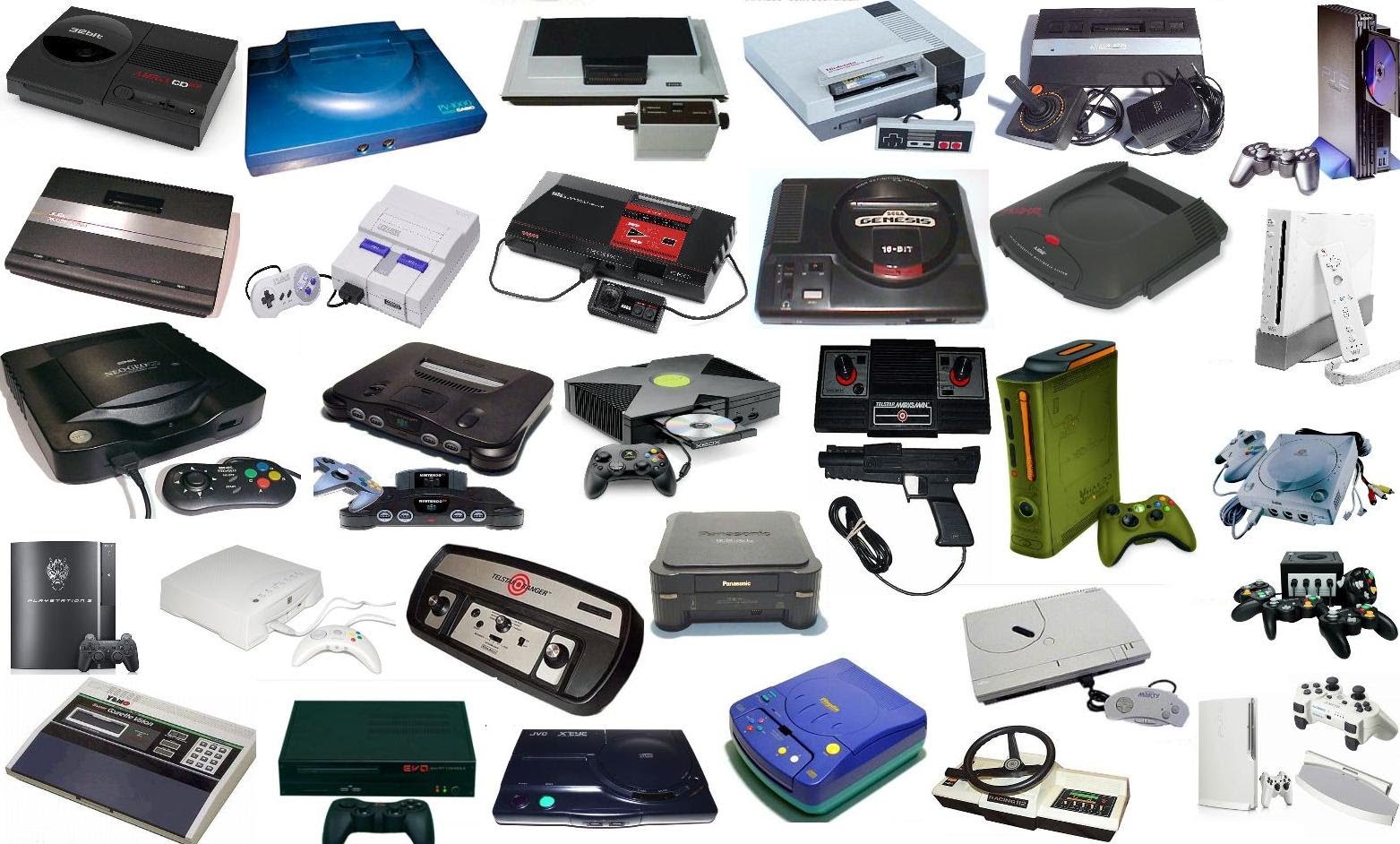Computer games have become an integral part of modern culture, but their origins date back to the distant past. The history of computer games is a story of creativity, innovation, and technological progress. It began decades ago and has since come a long way from simple electronic toys to complex virtual worlds that captivate millions of players around the world. The first computer games appeared in the 1950s when computers were very primitive and had limited capabilities. One of the first computer games was “Spacewar!”, developed in 1962 by students at the Massachusetts Institute of Technology. Players controlled spaceships and competed against each other in space battles. In the 1970s, the first arcade games appeared, such as “Pong” and “Space Invaders,” which became popular worldwide. These games used simple graphics and mechanics, but they played an important role in popularizing computer games among the general public.
In the 1980s, with the advent of home computers, computer games became even more accessible to a wider audience. The popularity of games grew, and the first major game companies, such as Nintendo, Sega, and Atari, emerged. One of the most popular consoles of that time was the Nintendo Entertainment System (NES), released in 1985, which brought such classic games as “Super Mario Bros.” and “The Legend of Zelda.” Additionally, the first personal computers, such as the Commodore 64 and Apple II, were introduced, allowing people to play games at home. In the 1990s, the gaming industry continued to rapidly evolve. The first games with 3D graphics, such as “Doom” and “Quake,” appeared, opening up new possibilities for creating realistic game worlds. During this period, the first online games also began to appear, such as “Ultima Online” and “EverQuest,” which allowed players from around the world to play together in one large virtual world. Today, computer games have become an essential part of modern culture. They come in various forms, from simple mobile games to complex multiplayer video games. Thanks to constant technological progress, games are becoming increasingly realistic and immersive, offering players incredible virtual adventures in a variety of worlds. With innovative technologies such as virtual reality and artificial intelligence, the future of computer games promises to be even more exciting and captivating for players around the world.
depozyt przez Paypal w kasynie is a convenient and secure payment option that allows players to quickly add funds to their gambling accounts.
Early Beginnings
The first computer games appeared in the 1950s when computers were very primitive and had limited capabilities. Despite their simplicity, these early games laid the foundation for the thriving industry we see today.
Here are some key milestones in the early development of computer games:
- “Spacewar!” (1962): Developed by students at the Massachusetts Institute of Technology, “Spacewar!” is widely considered one of the first digital computer games. It allowed players to control spaceships and engage in battles in the gravity well of a star.
- Text-Based Adventure Games: In the 1970s, text-based adventure games like “Colossal Cave Adventure” and “Zork” became popular. These games relied on text commands and descriptions to create interactive worlds for players to explore.
- Arcade Games: The 1970s also saw the rise of arcade games, with classics like “Pong” and “Space Invaders” captivating players around the world. These games introduced simple, addictive gameplay that would become a hallmark of early video games.
- Home Computer Games: With the advent of home computers in the 1980s, computer games became even more accessible to the general public. Games like “Pac-Man,” “Donkey Kong,” and “Tetris” became household names, and the gaming industry began to take off.
- The Role of BASIC Programming: Many early computer games were written in BASIC, a simple programming language that was easy for hobbyists to learn and use. This allowed aspiring game developers to create their own games and share them with others.
These early games may seem simple by today’s standards, but they laid the groundwork for the vibrant and diverse gaming industry we know today. They also sparked the imaginations of countless players and developers, setting the stage for the rapid evolution of computer games in the decades to come.
The Era of Home Computers
The 1980s marked a significant milestone in the history of computer games with the widespread availability of home computers. This era saw a surge in creativity and innovation as developers explored new possibilities for gaming. Here are some key developments during the era of home computers:
- Introduction of Home Computers: The 1980s saw the introduction of affordable home computers such as the Commodore 64, Apple II, and Atari 8-bit family. These computers brought gaming into people’s homes and sparked a surge in interest in computer games.
- Rise of Game Development Companies: The popularity of home computers led to the rise of game development companies such as Electronic Arts, Sierra On-Line, and Activision. These companies produced a wide range of games for home computers, including classics like “Ultima,” “King’s Quest,” and “Pitfall!”
- Expansion of Gaming Genres: With the increased power and capabilities of home computers, developers began to explore new gaming genres. Adventure games, role-playing games, and simulation games became increasingly popular, offering players a diverse range of gaming experiences.
- Growth of the Demoscene: The demoscene, a subculture focused on creating demos, intros, and other audio-visual presentations, emerged during this time. Demoscene groups would compete to create the most impressive and technically advanced demos, pushing the limits of what home computers could do.
- Introduction of Graphical User Interfaces (GUIs): The introduction of graphical user interfaces (GUIs) such as Windows and Macintosh made computers more user-friendly and accessible. This led to an increase in the popularity of computer games, as users could navigate and interact with games more easily.
Example of Popular Home Computers:
| Home Computer | Release Year | Notable Games |
| Commodore 64 | 1982 | “The Bard’s Tale,” “Ultima IV,” “Pitfall!” |
| Apple II | 1977 | “Prince of Persia,” “The Oregon Trail” |
| Atari 8-bit family | 1979 | “Star Raiders,” “Pac-Man,” “Pitfall!” |
The era of home computers laid the foundation for the modern gaming industry, introducing millions of people to the world of computer games and paving the way for the development of more sophisticated and immersive gaming experiences.
The Development of 3D Graphics and Online Games
The 1990s witnessed a significant leap forward in the world of computer games with the development of 3D graphics and the emergence of online gaming. These innovations revolutionized the gaming industry and paved the way for the immersive, multiplayer experiences we enjoy today.
With the advent of powerful graphics processing units (GPUs) and advancements in software development, game developers began to explore the possibilities of 3D graphics. Games like “Doom” and “Quake” pushed the boundaries of what was possible, offering players immersive, three-dimensional worlds to explore and interact with. At the same time, the rise of the internet paved the way for a new era of gaming. Online multiplayer games like “Ultima Online” and “EverQuest” allowed players from around the world to connect and play together in virtual worlds. These games introduced new social dynamics and challenges, creating communities of players who would meet, compete, and cooperate in shared online spaces.
The development of 3D graphics and online gaming marked a turning point in the history of computer games, ushering in a new era of immersive, interactive entertainment. These innovations laid the groundwork for the massive multiplayer online games (MMOs), virtual reality experiences, and esports competitions that define the modern gaming landscape.
Modern Computer Games
Today, computer games have evolved into a diverse and vibrant form of entertainment, offering a wide range of experiences for players of all ages and interests. From casual mobile games to complex multiplayer experiences, modern computer games continue to push the boundaries of what is possible in interactive entertainment. One of the most significant developments in modern computer games is the rise of esports. Competitive gaming has become a global phenomenon, with professional players competing for fame, fortune, and glory in games like “League of Legends,” “Dota 2,” and “Counter-Strike: Global Offensive.” Esports tournaments attract millions of viewers worldwide, and top players can earn millions of dollars in prize money and endorsements. Another major trend in modern computer games is the rise of virtual reality (VR) gaming. VR technology allows players to immerse themselves in virtual worlds like never before, experiencing games in a whole new way. From exploring alien planets to battling zombies in a post-apocalyptic wasteland, VR gaming offers an unparalleled level of immersion and interactivity. In addition to esports and VR gaming, modern computer games continue to innovate in terms of storytelling, graphics, and gameplay mechanics. Games like “The Last of Us,” “Red Dead Redemption 2,” and “The Legend of Zelda: Breath of the Wild” offer rich, immersive worlds to explore and compelling stories to experience. Looking to the future, the possibilities for computer games seem endless. Advances in technology such as artificial intelligence, cloud gaming, and augmented reality promise to open up new frontiers in interactive entertainment. Whether you’re a casual gamer, a competitive esports player, or a virtual reality enthusiast, the world of computer games has something for everyone.









